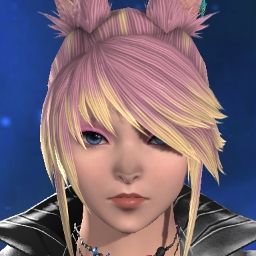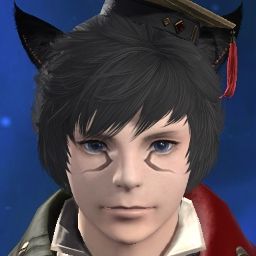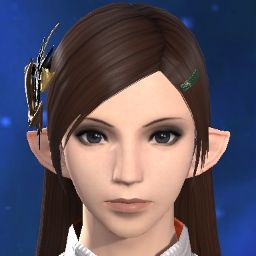It's not just that (in regards to Pitch Perfect). It's also worth noting that two Pitch Perfects at 240 potency = 480 total potency, which is more than one 420 potency Pitch Perfect. In a situation where you have an ultra high probability of getting 2 repertoire stacks per dot tick, it's usually better to go for that instead of waiting for the 3 stack especially because of the risk of 'repertoire overflow', unless your Empyreal Arrow is available to push it to 3 stacks/your Wanderer's Minuet is about to expire and Pitch Perfect won't come off cooldown again before the final dot tick in that song.
The new Pitch Perfect was buffed in that when it's fully powered up, it's 450 potency instead of 420, with the non-powered up versions staying the same as before. While the principle above still applies, it's no longer as much of a DPS loss to go with a fully powered up Pitch Perfect. When taking into account along with the proc changes, it's likely that post-ShB, you'll usually be better off waiting for a fully powered up Pitch Perfect since you won't be getting double repertoire as much, what with the lack of ways to push proc rate higher aside from dotting multiple enemies.
(On a side note, I've been running a lot of random content, particularly dungeons where there's usually a lack of crit-increasing party buffs to simulate what a flat 40% rate at almost all times is going to feel like, since a BiS Bard has somewhere in the realm of ~38% base crit rate right now - I actually have 39% thanks to my Eureka bow. I am now wondering if a flat 40% proc rate might actually be too low, because 40% is still in the realm of where you could get really screwed over by the RNG to the point where I sometimes ended up with only 2 fully powered up Pitch Perfects in a full Wanderer's Minuet window. Consider that Apex Arrow will be operating off of those same proc rates too... While your Refulgent procs will be more consistent - though not by much since 35% is also in the realm of possibly getting RNG screwed - your overall DPS may be at the mercy of the RNG more than ever before. And this time, it's RNG you can't manipulate unless there are multiple mobs present. It's the same problem Machinist RNG had, although while their RNG couldn't be manipulated by the presence of multiple targets, they had force proc tools too.
Although admittedly, once again, one could argue that we're basically trading broken burst at the tail end of an expansion with the help of a few other classes, for more stability/consistency throughout the entire rest of the game. But boy is this going to feel bad for us raid Bards who are used to sometimes reaching the end of a fight with 45+% crit rate.)
To expand on the Army's Paeon stuff, in some fights, it's better to let Army's Paeon run the full length if you know the boss is entering an invulnerability phase during the time that you'd normally swap to Wanderer's Minuet.
On a side note, the reverse can be true as well. Some fights could even let you skip an Army's Paeon window entirely. A notable example of this is during the early Ultima phases in UwU, where the optimal starting song rotation is Minuet -> Ballad -> Minuet. This is because after the first Minuet, Ultima goes into an invuln phase that lasts long enough that by the time your following Mage's Ballad runs its full course, Wanderer's Minuet is either available or is about to become available again. Not capitalizing on it there is bad because doing the normal song rotation there means you'll have one less Wanderer's Minuet window for the entire fight overall/won't have Wanderer's Minuet available for the critical enrage phase - and UwU is known for having a SUPER tight enrage. This concept earned me my 97th percentile in there for my first clear, along with the smug satisfaction that I was usually the last person in my party to get nuked during enrage, when Bards are typically the first of the DPS to get blasted (the enrage nukes party members one by one from order of least DPS to highest).
As for the rest...
Double Snapping: DoT damage in this game is based on what buffs you have up when you apply (or refresh) them, and stay for their whole duration, which is why you typically want to Iron Jaws before buffs like Battle Litany and Chain Stratagem fall off, even if the DoT timer is still like 10-20+ seconds from expiring.
Foe optimization: This is honestly a small thing, but some hardcore groups will try to assist the Bard in maximizing foe uptime/aligning foe for certain party buffs/debuffs. Usually this involves the Bard using Refresh at strategic times to ensure they have enough MP to cast Foe for a burst window, or even going as far as to have the caster Mana Shift the Bard.
Troubadour: In many situations, the top Bards will actually map out a song rotation for an entire dungeon/boss fight, so that they will be in the correct song to use Troubadour during key sections where every bit of mitigation counts. Back when I progged UwU, I actually had a song rotation mapped out for the whole 16 minute fight, so that Troubadour would be available during Ifrit Nails/Titan healer gaol and tumults/Ultima pre-Annihilation AoEs. The Troubadour nerf (and I say nerf because current Troubadour is 30 seconds as opposed to new Troubadour only being 15) and the loss of Palisade is especially going to be felt during dungeon mass pulls, as my presence usually meant the tank would have extra 30%/20%/10% physical damage reduction for mass pulls.
Not sure what they mean by Barrage fishing though, because the only meaningful fishing that ever happens is fishing for a Triple Refulgent during a Raging Strikes window.
That said, I'm not entirely convinced Bard is a straightforward class to optimize even with these changes. After all, Bard is considered one of the easier classes to play already, and yet it has earned a reputation for having one of the largest class populations of players who are absolutely terrible at playing it, only beaten out by Samurai and Red Mage (both of which are probably considered even easier than Bard).
-
06-06-2019 06:37 PM #31(3)
Last edited by SaitoHikari; 06-07-2019 at 05:01 PM.
"Consider this old adage: When a Bard sings alone in a desert, and no one is around to hear him... Is he truly singing?"
-
06-07-2019 12:32 AM #32
More expansion on Army's because gotta enjoy it while it lasts~
In the grand scheme of things, doing a 30s AP is not actually much of a loss in 4.x, because it means you don't hold an EA, and you get an additional guaranteed BL that you may not have otherwise, and your potency per second at 4 stacks of AP isn't -that- far behind Ballad.
It actually maths out to being close to break-even, however that's just comparing theoretical averages. In-context, WM+Raging+Barrage sequences are our big burst, so priority #1 is maximizing how many of those we get over the course of a fight. If we can fit in 30s APs without losing WM time, and it gives us some buff or phase alignment benefit, then that's a thing you can do to score some nice gains in 4.x.
Assuming that we do get Bloodletter charges, the dynamic is going to shift, as we won't really have much of a burst anymore - just Barrage, which isn't song-tied. Minuet and Ballad will hold similar value, ironically pushing AP much further behind despite Burst Shot and despite Muse. Also because we won't be doing EA holds anymore, and the extra BL concept will be less pertinent with charges.
So, instead of prioritizing "maximize WM/RS bursts, then add 30s APs to taste", it's going to be about getting our total time spent in AP / burst time spent in AP to a minimum. Should be more intuitive, which is nice, but there's less we can do about it because slotting in 30s APs runs directly counter to the goal and Muse disincentivizes such a move further.
Still exploring the details and options, so I don't want to dive deeper on that in case it gets misleading. But like a couple other things, it's a fairly small impact matter at the end of the day (cutting an AP out of a fight may be worth ~0.5% dps at best) relative to what you could gain in 4.x, and situational besides.
Of course enough such small impact things could add up, which is why I'm hoping for Apex done right and that Raging tweak, but as of media tour we aren't there yet. So I'm on here being a bit toxic about it (3)
(3)
-
06-09-2019 06:50 AM #33Player

- Join Date
- Sep 2013
- Location
- Gridania
- Posts
- 368
- Character
- Rika Lockhart
- World
- Coeurl
- Main Class
- Bard Lv 100
I have to chime in that while I don't mind the steadying of BRD's kit, it sucks to lose some of the fun of the Crit optimization gain, but knowing the job won't feel as bad earlier expansion will feel much better. But the loss of it's identity as a supporter of the party has me more then a bit steamed. I can understand the crit buff being removed, that was more then a bit ridiculous and too passive, and tactician is fine, but everything else? Foe's was the one ability to BRD that since 2.0 could be considered Iconic. It's what every member of the party knew us by, no different then Hallowed Ground on PLD. Refresh being pulled away from all Ranged felt bad (especially with how MP starved it looks like SCH and AST are gonna be) but it feels even worse when you remember it is essentially the replacement for original Mage's Ballad. Palisade was also a really fun ability to use, even if it was niche in certain raids.
And seeing all this support on Dancer is just like more salt in the wound. I could care less about BRD's place in the Meta of 14 (Although I do wonder what this puts BRD's DPS at if the dev are caring about Balance, as in terms of the lack of DPS utility it now brings, it should be over Summoner in raw single target power, but I'm pretty sure that would really tick off casters if free moving ranged DPS classes could out DPS them if skill is equal). I care about it's job identity. BRD is the OG support of FF, ever since FF2. Hell it's the OG support of all class based fantasy games. Seeing it being turned into a glorified Ranger just ticks me off.(2)
-
06-09-2019 08:00 AM #34
Yeah, Foe Requiem being removed ticks me off from a thematic standpoint. And also because I can no longer call myself as being part of a class that uses every single resource at their disposal. Now we don't have anything that uses MP.
In FF3, Bards in that game actually had five songs. FF14 Bards had all but one of those songs incorporated into this game.
- [Nature's] Minne
- [Wanderer's] Minuet
- [Foe] Requiem
- [Army's] Paeon
- Elegy
I imagined we'd finally get Elegy this expansion, but I guess not with the reduced emphasis on support that the game as a whole is veering towards now.(0)"Consider this old adage: When a Bard sings alone in a desert, and no one is around to hear him... Is he truly singing?"
-
06-09-2019 04:15 PM #35Player

- Join Date
- Jan 2015
- Location
- New Gridania
- Posts
- 482
- Character
- Shannon Dawn
- World
- Moogle
- Main Class
- Bard Lv 90
Big agree on this one. Bard is getting heavily gutted on all of the more intricate fronts in favor of making it a more streamlined job deriving majority of its dps through simply pressing its priority rotation. The problem with that is, that the job already has a pretty braindead priority rotation and ShB is not exactly making that more complex or difficult at all. This is a big tone down from the current iteration of Bard, that has a plethora of min-max optimizations to be made. The job is going from having a ton of micro-management to do to having very little of it at all.
While many may see these (for the most part, Quality of Life) changes in a positive light, the new expansion really is all about pruning a lot of intricate, yet perhaps not streamlined, aspects of bard without really giving back much in return. If the job ships out like this, I don't really see myself being very excited at all to play it when both DNC and MCH look a lot more interesting to play. I don't really care how Bard fares meta-wise, but I don't really believe the build showed in the media tour will be either fun or rewarding to play at all at high skill levels.
Getting QoL is not bad by itself, but there is such a thing as oversimplification and streamlining the mechanics too much at the cost of depth and intricacy. The job needs some work if they really want high-end players still feel excited about taking the job to fights at all.
I have been a Bard main since 2.3 and cleared all of the relevant raid content in the current expansion. I can provide a more concrete list of arguments if necessary, but I believe Cetonis already summed up most of it.(1)Last edited by ShaneDawn; 06-09-2019 at 06:05 PM.
-
06-09-2019 04:56 PM #36
Yeah, the more I think about this over time, the more miffed I get.
This double whammy of support gutting AND shifting Bard away from team-based optimization actually feels really bad. Admittedly, only raid Bards will truly feel this, and we're a tiny minority of players in a super popular class known for having an absolutely massive skill/DPS gap between different players. And SE is unlikely to listen to suggestions for even small tweaks to bring some of that complexity back (really, I just want Foe back so I can have something that will actually use my MP bar, and coordinating Foe with other Bards in a party/alliance can be pretty fun) unless there's like a mass Warrior community-level riot by all the Bards during the first month or something. Alas, there really aren't any major content creators that actually main Bard.
I have a different concern as well. We're getting all these potency buffs, but so are the other classes, yet they probably aren't losing as much as Bard will for those buffs. I'm not sure the 20-30 potency buffs across Bard's GCDs will really make up for the loss of constant 10% crit rate from Straight Shot. 'Crit Machine' was still a unique identity for Bard to have.
I expect a lot of balancing for Bard throughout the expansion (mostly revolving around tweaking the RNG), while we were relatively untouched throughout most of Stormblood, and for good reason.
(As another aside, I used to rip on MCH design constantly due to the class feeling like it couldn't decide if it wanted to be a mechanical summoner, a gunslinger, or an all-in-one heavy weapons armory. Now, more than ever before, I wonder if Bard design can't decide if it wants to be a Ranger or an actual Bard. Stormblood had an actual balance, and now it's skewing back towards Ranger, hard.)(0)Last edited by SaitoHikari; 06-09-2019 at 05:07 PM.
"Consider this old adage: When a Bard sings alone in a desert, and no one is around to hear him... Is he truly singing?"
-
06-09-2019 10:56 PM #37Player

- Join Date
- Mar 2011
- Location
- Maelstrom
- Posts
- 3,057
- Character
- Dyvid Pandemonium
- World
- Adamantoise
- Main Class
- Blacksmith Lv 90
Honestly, I feel Physical Ranged DPS has lost their niche as DPS/Buff all in favor of boosting Dancer. This is a bad move. Sure you can have DNC be the Buff/DPS but that doesn't mean you can toss BRD in the middle and have MCH at the other end.
If I was Dev for a day I would keep the +2 Critical bonus for songs, then add a gauge that is filled by the how long you can maintain your songs. Once full you can use Foe Requiem.
MCH I would keep the Bishop Turret that does the AoE damage with a passive trait that Increases damage taken by nearby enemies by +1 (helpful for AoE groups). Rook Turret I would add a passive trait the increases damage dealt by a party members by +1%.(0)
-
06-10-2019 11:02 PM #38
You will miss "CASTING "Foes at the beginning of every fight?? Hell naw, screw that. i'm glad it's gone. good riddance. The core mechanics of Foes was a flawed design to begin with. I mean seriously, playing Refresh [which is now gone in 5.0] just to get mana back to play Foes again- healer mana be damned?? That's just bad design. And if refresh is gone, Foes will truly be worse off anyway......
However!! it is jacked up how SE preaches homogenization & support class, then proceeds to gutt Bard and give Dancers all the abilities befitting of the term SUPPORT class. Now that's crazy. just WoW!(0)Last edited by Omnia; 06-10-2019 at 11:09 PM.
-
06-10-2019 11:26 PM #39
They could have changed Requiem to a castless oGCD (like they changed Ballad and Paeon in 4.0) without removing it entirely though. I agree that it having a cast time was an annoyance and added nothing to the gameplay other than incentivising you to cast it just before an uptime phase starts.
(0)
-
06-10-2019 11:53 PM #40Player

- Join Date
- Feb 2013
- Location
- Limsa Lominsa
- Posts
- 2,166
- Character
- Connor Whelan
- World
- Odin
- Main Class
- Bard Lv 100
I am sad that they’ve removed Foe Requiem, it was the only actual Bard song we had left, but I guess they don’t want Bards to sing more than once every 30 seconds.
I don’t understand the purpose of the ‘Soul Voice’ gauge either. I mean, there’s the glaringly obvious issue that the ‘Soul Voice’ gauge is entirely unrelated to your voice in any way which is kinda hilarious.
But from my understanding, the gauge exists solely for use of Apex Arrow? But Apex Arrow only costs 20 of that gauge anyway. So as long as you have more than 20 gauge you can use Apex Arrow without any real repercussions or gauge management? It’s not like you have to think ‘should I use Apex now? Should I use X instead?’ Etc, literally the only kind of management I can see at the moment is looking to see if you have enough gauge to use another Apex if you use it. Why not just make a cooldown? Did we really need another gauge just for the sake of having another gauge?(0)






 Reply With Quote
Reply With Quote








